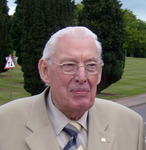Northern Ireland Assembly election, 1982
|
|
|||||||||||||||||||||||||||||||||||||||||||||||||||||||||||||||||||||||||||||||||||||||||||||||||||
|
|||||||||||||||||||||||||||||||||||||||||||||||||||||||||||||||||||||||||||||||||||||||||||||||||||
|
|||||||||||||||||||||||||||||||||||||||||||||||||||||||||||||||||||||||||||||||||||||||||||||||||||
|
|
|||||||||||||||||||||||||||||||||||||||||||||||||||||||||||||||||||||||||||||||||||||||||||||||||||
| Percentage of seats gained by each of the party. | |||||||||||||||||||||||||||||||||||||||||||||||||||||||||||||||||||||||||||||||||||||||||||||||||||
|
|||||||||||||||||||||||||||||||||||||||||||||||||||||||||||||||||||||||||||||||||||||||||||||||||||
None
None
The Northern Ireland Assembly elections were held on 20 October 1982 in an attempt to re-establish devolution and power-sharing in Northern Ireland. Although the Northern Ireland Assembly officially lasted until 1986 (and was seen as being a continuation of the Northern Ireland Constitutional Convention of 1975) it met infrequently and achieved very little.
The electoral system proved to be hugely controversial. While there was general acceptance that the elections should take part using the Single Transferable Vote system, the decision to use the same twelve constituency boundaries used in the 1973 Assembly election rather than the new seventeen constituency boundaries which were later adopted in the 1983 general election was heavily criticised. The problem was that the Boundary Commission for Northern Ireland's Final Recommendations, which recommended that all future Assembly elections should be held using seventeen constituencies each electing five members, had not yet been approved by Parliament and therefore remained, technically, provisional recommendations.
The consequence of this was that the elections were held using constituencies which varied greatly in size and electorate, ranging from Belfast West with an electorate of 57,726 to South Antrim with an electorate of 131,734. In the latter constituency this resulted in huge administrative problems with a record 27 candidates standing necessitating 23 counts over 36 hours with the count not completed until two days after the election. A further result of the disparity in electorates was that the number of members returned for each constituency varied widely, from four members in Belfast West to ten members in South Antrim.
...
Wikipedia






